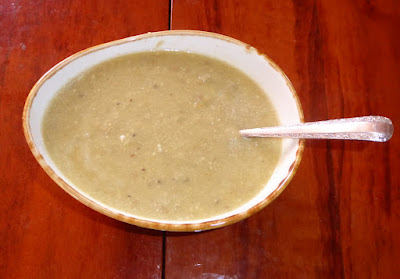No tofu; no chickpea flour
- Put the peanuts into the blender and whizz them into a coarse meal.
- Now add 1/2 cup water, the flour, nutritional yeast, black salt, turmeric, garlic and olive oil.
- Blend quickly - you don’t want to pulverise the peanuts: this gives the scramblers some texture.
- Scrape the contents into a small saucepan and rinse out the blender with another 1/2 cup of water (put it back together and give it a good shake) and pour this into the pan. This is the easiest way to make sure everything goes in the pan!
- Heat the mixture over a moderate flame and stir regularly until the mix is hot and starting to thicken. Turn the heat right down, continue stirring occasionally, taste and season with a generous amount of black pepper and more salt if you think it needs it. Add some more water if it is getting too thick.
- Blanched peanuts are cheap; they are also better for both workers and the planet than cashews, which would be most people’s choice. Peanuts require much less water than most nuts, they are nitrogen-fixing and their preparation doesn’t generally exploit low wage-people working in poor conditions. I don’t understand why they aren’t used more often. However, use cashews if you prefer them or can’t get peanuts.
- Tapioca flour doesn’t seem to need cooking the same way as cornflour, once it starts to thicken, which is why I suggest it. Uncooked cornflour has a definite taste and sensation to it. Using a little flour creates a more convincing texture as does the slight ‘stretchiness’ of the tapioca flour.
- The small amount of nutritional yeast does, I think, improve the flavour, but you could leave it out if you don’t have any.
- The black salt is to give the sulphur scent that eggs have. Don’t use it with a heavy hand and if you like your scramblers more salty than the recipe, add some more normal salt. Again, you could leave it out, but the result will be a less convincing substitute for eggs.
- The turmeric is necessary for colour: again, use a light touch – it’s a powerful dye! This amount makes the scramblers a light yellow.
- I love a little bit of garlic in my scramblers. Leave it out or substitute 1/2 tsp onion powder if you can’t face garlic at breakfast. Neither is crucial.
- If you don’t have a blender, this might work with 1/2 cup ground almonds, but they have a much stronger flavour than peanuts.







